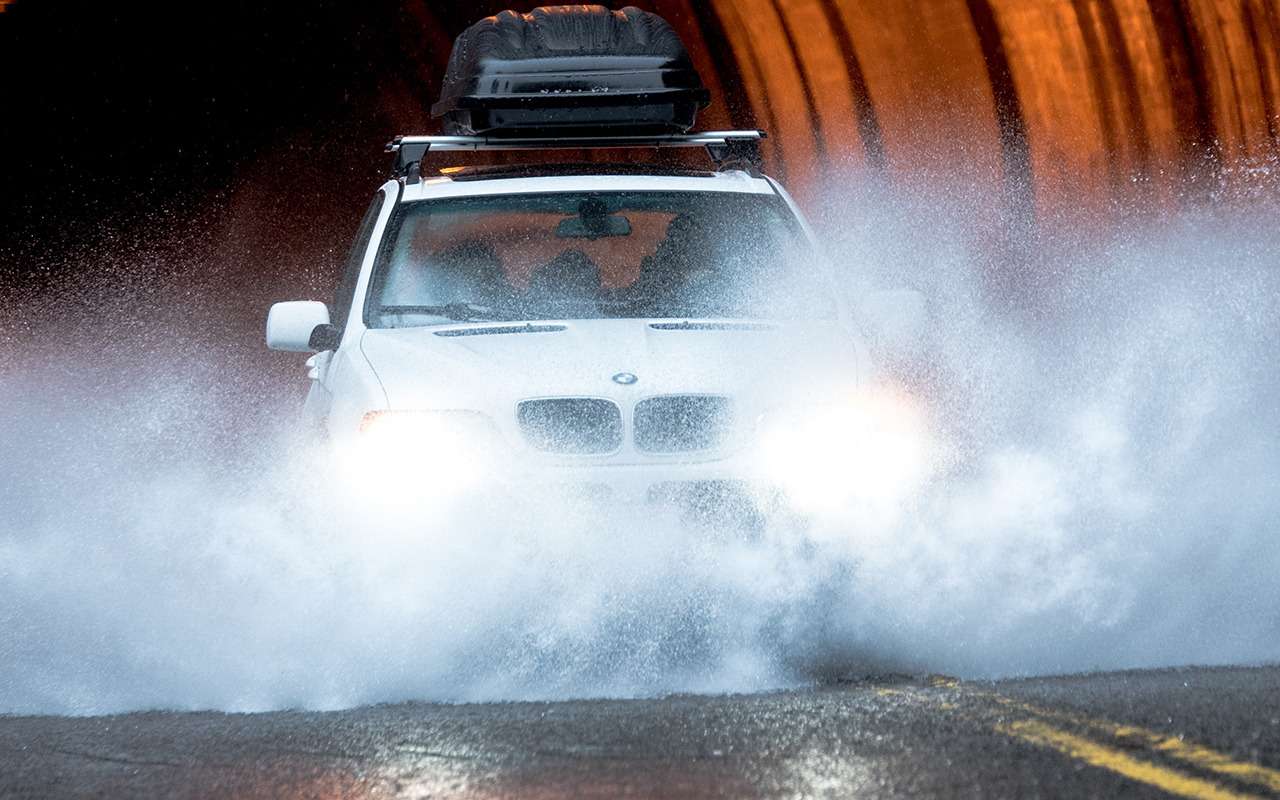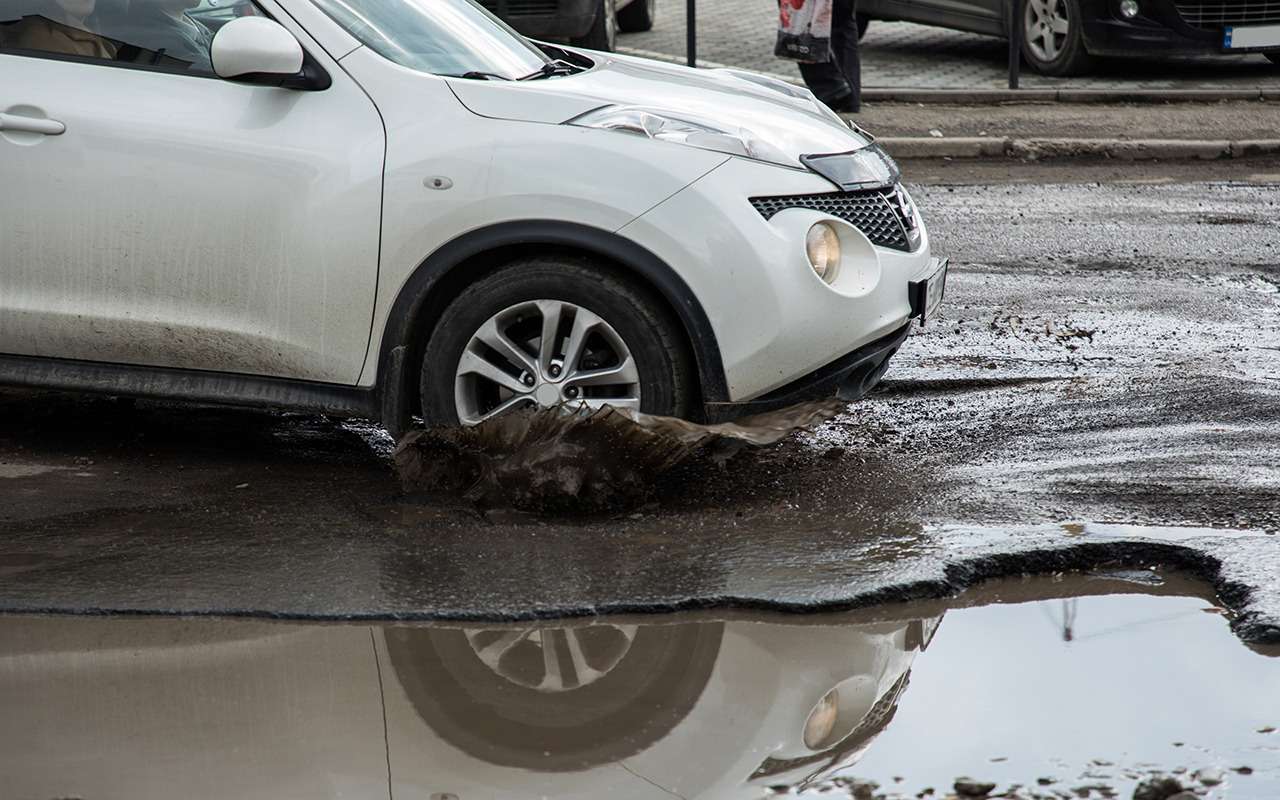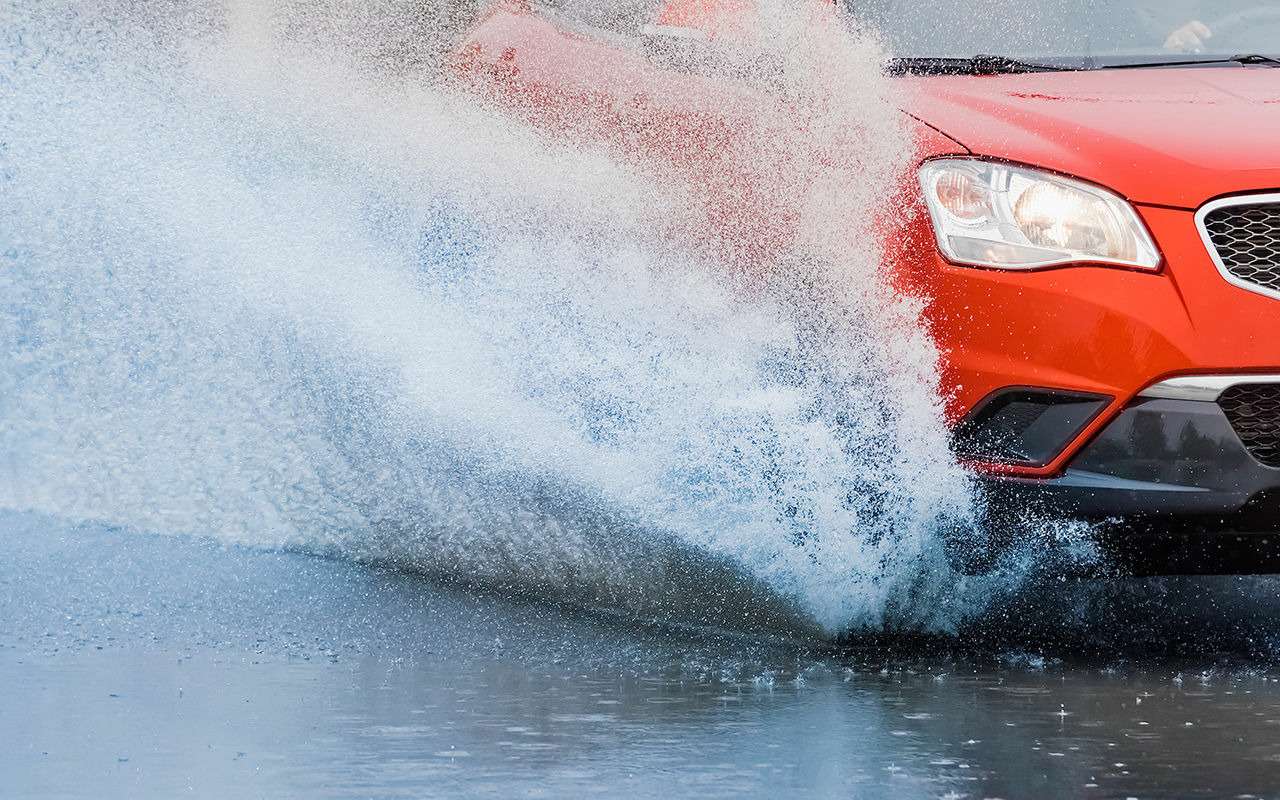Why is a puddle dangerous?
The worst part is that the puddle may be deeper than it appears. And for all cars, the air intake faces forward and is located near the radiator (for some it is very low). When driving through a puddle, water may enter the air intake and cause water hammer in the engine. Unlike an air-fuel mixture, a liquid is incompressible. When it gets into the cylinders, it destroys the pistons and connecting rods.
In a deep puddle, water can also penetrate into the transmission units – a gearbox, a transfer case or a gearbox. For some SUVs, the air vents of these units are equipped with pipes placed high enough. Crossovers have no such protection and the risk of “sipping out of a puddle” is high.
If the puddle is very deep, the vehicle may float up and float freely, leading to a collision with another vehicle or road elements.
Are there other “pitfalls”?
There may be deep wells or open sewer wells at the bottom.
Patches of asphalt next to the puddle and debris most likely flew out of the bottom of the puddle, and a deep trench formed there.
Hidden underwater are sharp objects that could pierce a wheel or even an engine oil sump.
When storming a flood defense you can also lose license plates, because they are now fixed with thin plastic frames.
Deep holes can be hidden in an innocent looking puddle. Yes, and with sharp edges.
How to determine the depth?
If a car is in front of you, slow down and wait for it to cross the obstacle. All is well – follow the same course.
Another thing is when trucks storm a flood barrier. If the water covers at least half a wheel, in a passenger car and even a crossover, you should not interfere behind it. Rather look for a detour.
If there are no cars and the view of the puddle is suspicious, it makes sense to walk on the water and check the depth with a stick. This is of course advice for those who have high rubber boots in the trunk.

How to get there?
When overcoming a puddle, try to keep the wheels dry on at least one side, this will keep the danger of falling through them, but it will also make it easier to pull the car out.
Movement speed should be kept to a minimum. After all, in front of the bumper of the car rises a shaft of water, which can overwhelm even the high air intake of the engine.
Move strictly in first gear (on automatic machines, robots, CVTs, you need to fix it by force). The engine will develop a sufficiently high speed to prevent water from entering the exhaust system.

After driving through a puddle, slow down several times to dry the brake discs and drums. Thus, restore the braking efficiency.
- “Behind the wheel” can also be read in Telegram.
This milking is easy enough… to get in a puddle! The expert gave several recommendations to avoid problems.


